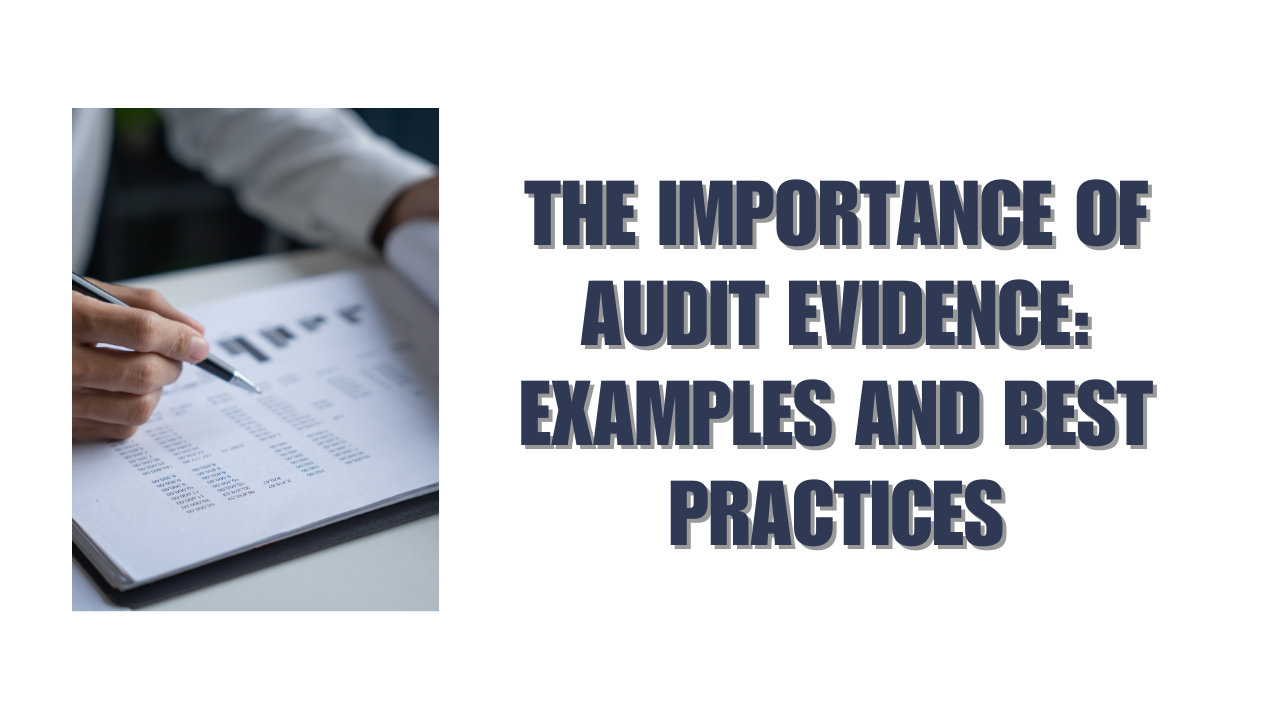The world faces a staggering USD 9.5 trillion cybercrime cost this year. This makes cybersecurity compliance audit procedures more vital than ever. Data breach costs hit a record high of £4.48 million in 2023 – up 10% from last year. Organizations must prioritize proper security protocols.
Cyber threats evolve faster than ever. Security audit procedures have become key parts of any strong risk management strategy. Companies that skip regular security audits risk devastating data breaches, disrupted operations, legal issues, and damaged reputations. Internal auditors help companies alleviate these risks. They provide a full picture of security controls and spot dangerous gaps.
This piece outlines the steps you need to become skilled at cyber security audits. Your organization will be ready for compliance success in 2025. You can prevent cyber attacks and build stronger security against new threats by doing this and being systematic.
Define Audit Scope and Regulatory Frameworks
The key to successful cybersecurity auditing starts with defining the audit scope and choosing the right regulatory frameworks. A well-defined scope serves as a roadmap that shows what your evaluation process will cover. This foundation helps you decide which systems, networks, data, and processes need a closer look during the audit.
Mapping to NIST, ISO 27001, SOC 2, and HIPAA
Each regulatory framework has its own purpose, but they share many common elements you can utilize for better compliance. The NIST Cybersecurity Framework provides a structured plan that covers identification, protection, detection, response, and recovery. ISO 27001 sets international standards to develop a management framework and provides guidelines to implement controls.
SOC 2 helps service providers manage data securely to protect their client’s privacy. Healthcare organizations must follow HIPAA mandates that control how protected health information (PHI) should be used and shared.
You can create efficiency by mapping requirements that overlap between frameworks. To name just one example, ISO 27001 and HIPAA share these elements:
- Both need regular risk assessments to spot system vulnerabilities
- Both require information security policies to protect data confidentiality
- Both frameworks include access control requirements (ISO 27001’s A.9.2 User Access Management lines up with HIPAA’s access control provisions)
This strategic approach cuts down on duplicate work by finding common requirements across frameworks and creating a structured matrix that ensures consistent compliance.
Identifying business units and data types in scope
A thorough analysis helps determine which business units need auditing. Start by identifying key assets that need protection:
- IT infrastructure (servers, networks, endpoints)
- Data processing systems
- Access control mechanisms
- Encryption protocols
The next step is to classify data types that need protection based on regulations:
- Personally Identifiable Information (PII) including names, addresses, and social security numbers
- Protected Health Information (PHI) in medical records
- Financial information such as payment card details and banking records
Risk assessment should guide the scope’s determination, with focus on critical assets and potential threats. Product offerings, customer requirements, geographical locations, and business units all play a role in this decision.
Aligning audit objectives with compliance requirements
Clear, measurable objectives keep your audit focused and in line with your organization’s security goals. Senior stakeholders should meet to decide which topics the audit will cover, which risks need attention, and what results they expect.
A cybersecurity audit typically looks at:
- Network vulnerabilities and weaknesses
- Existing security controls’ effectiveness
- Encryption standards implementation
- Application and software security
- Data processing activities’ compliance with security policies
Organizations in regulated industries need to match these objectives with specific compliance requirements. The IIA Cybersecurity Topical Requirement gives auditors a standard way to check compliance with established frameworks. This approach helps organizations maintain strong security while meeting regulatory obligations.
Note that different departments should participate in this process. Their varied views help create better security strategies through cooperation.
Conduct Risk Assessment and Asset Inventory
Risk assessment builds the foundation of working cybersecurity audit procedures. Your next significant step after defining the audit scope analyzes your digital world to spot vulnerabilities before attackers can exploit them.
Digital asset mapping: systems, endpoints, and data flows
A detailed digital asset inventory is the life-blood of risk assessment. You cannot secure assets within your digital environment without knowing they exist. Start with a full audit to create a complete inventory of IT assets including:
- Hardware components (servers, endpoints, IoT devices)
- Software applications and services
- Cloud resources and SaaS solutions
- Network infrastructure and data repositories
- Internal and external interfaces
Asset mapping needs continuous monitoring to track new assets and their vulnerabilities as they appear. Security teams can quickly identify and isolate affected systems during security incidents with this visibility, which speeds up incident response.
Mapping data flows between assets holds equal importance. Your environment’s sensitive information movement helps identify implicit risks from transitive exposure or undocumented access paths. System dependencies become clear through this visibility – significant for both risk assessment and disaster recovery planning.
Threat modeling and risk prioritization
Threat modeling takes us from theoretical risk to ground scenarios by looking at your system from a potential attacker’s view. This well-laid-out approach helps calculate and address security risks by looking at potential attackers, their tactics, and their likely targets.
The STRIDE methodology offers a useful framework to identify common threat categories:
- Spoofing
- Tampering
- Repudiation
- Information Disclosure
- Denial of Service
- Elevation of Privilege
Threat modeling works best through shared teamwork. Technical teams often lead this process, but stakeholders from different departments bring varied views and uncover hidden threats. Teams can prioritize threats based on likelihood and potential effects on operations, assets, people, and company reputation.
Baseline risk scoring for audit readiness
A baseline risk scoring system helps organizations calculate their security posture and track improvements. This baseline measures progress and shows compliance during audits.
Risk scoring looks at multiple factors:
- Likelihood of exploitation
- Potential effects on confidentiality, integrity, and availability
- Ease of remediation
- Relevant threat intelligence
Keep an up-to-date risk register with current assessments and clear scoring methods before auditors arrive. Your risk prioritization and escalation processes need documentation as compliance reviews will examine these closely.
Risk scoring should happen continuously rather than at specific points in time. Regular updates show security teams and business leaders how risks evolve – highlighting increasing risks and successful risk reduction efforts.
Risk baseline scoring translates technical vulnerabilities into business effects. It expresses potential losses in terms leadership understands monetary costs, recovery expenses, regulatory fines, and reputation damage. This translation helps secure resources to address identified risks.
Automate Control Monitoring and Evidence Collection
Organizations need automated control monitoring and evidence collection to maintain continuous compliance. Manual cybersecurity compliance audits often lead to time-consuming processes and errors.
Continuous control validation using GRC tools
Point-in-time assessments no longer give adequate security assurance in today’s ever-changing threat landscape. Organizations now prefer continuous validation approaches that show their security status live. Modern Governance, Risk, and Compliance (GRC) tools help businesses move from periodic checks to ongoing control monitoring.
These platforms combine smoothly with mission-critical systems to track risks, identities, cyberthreats, and compliance status. They run daily control tests automatically on cloud infrastructure and internal systems to match established security standards. This approach helps organizations spot weaknesses before attackers can exploit them.
The benefits of continuous validation include:
- Quick detection of misconfigurations and control failures
- Active risk management instead of reactive responses
- Standard framework implementation in a variety of environments
Centralized evidence repository setup
A central repository for all compliance evidence removes the chaos of managing scattered documentation. Organizations used to struggle with evidence coming through emails, shared drives, text messages, and physical documents, which made tracking almost impossible.
Modern centralized repositories now allow organizations to:
- Keep all evidence, controls, and documents in one place
- Link collected evidence directly to compliance requirements
- Give auditors quick access during reviews
Microsoft uses Azure confidential ledger to create a tamper-proof centralized evidence store that makes auditing easier. This unchangeable storage keeps all records intact and verifiable, which simplifies evidence management throughout the organization.
Reducing manual effort with audit automation platforms
Audit automation platforms cut down the work needed for cybersecurity compliance significantly. These solutions link directly to your tech stack – including cloud providers, identity tools, and ticketing systems—and pull relevant evidence automatically.
Organizations that use automation see big improvements:
- Compliance efforts drop by more than 70%
- Human errors in evidence collection decrease
- Costs go down by removing duplicate security controls
Tools like Secure frame, Hyperproof, and Drata offer continuous control monitoring, automated evidence collection, and live compliance dashboards. These platforms help teams find gaps and fix problems before external auditors arrive.
Compliance teams can now work on strategic projects instead of routine tasks while getting better audit results and reports.
Detect Gaps and Respond to Non-Compliance
Good compliance goes beyond just watching controls. Organizations need clear markers to spot problems. A systematic way to find gaps helps address non-compliance issues before they become serious security incidents or regulatory violations.
Defining non-compliance thresholds
Clear thresholds help distinguish normal variations from actual compliance failures. These thresholds serve as the foundation for automation that lets systems react quickly to potential risks. Companies should set specific triggers that match regulatory standards like PCI DSS, GDPR, HIPAA, ISO 27001, SOC 2, FedRAMP, and CMMC requirements.
Good thresholds offer multiple advantages:
- They set clear expectations about basic security practices
- They let organizations measure and improve their standards
- They create useful system insights through regular reporting
Risk levels must be clearly defined to guide decisions about fixes and investments. Organizations cannot properly focus their fixes or use resources well without these thresholds.
Alerting and remediation workflows
Automated alert systems must watch compliance metrics and analyze data patterns once thresholds exist. These systems should send immediate alerts when they spot unusual patterns or departures from normal standards. To cite an instance, PHI access violations might need quick security team alerts, while pending system updates could start automated maintenance schedules.
Alert systems support several vital functions:
- Quick identification and resolution of compliance issues
- Timely breach reporting (like GDPR’s 72-hour notification rule)
- Faster compliance reporting and audits
Tracking corrective actions and audit trails
Complete audit trails create permanent records to investigate non-compliance incidents. These detailed logs track actions, events, and transactions with timestamps. They work like a digital diary that documents everything around key business operations.
Audit trails need a structured approach to corrective actions. Each fix should have a deadline and verification steps. Teams can assign tasks with realistic deadlines, which creates accountability throughout the organization.
Manual processes for fixes don’t work very well. Human errors cause delays and increase risk. This becomes critical since attackers exploited 75% of vulnerabilities within just 19 days of publication in 2023. Automated systems help security teams work better by providing useful insights based on threat severity and business effect.
Prepare for Internal and External Audit Reviews
Proper preparation bridges the gap between regular compliance work and successful audit results. A full assessment helps organizations showcase their control effectiveness and respond with confidence when auditors ask questions.
Internal audit simulation and stakeholder interviews
Running internal simulations before formal audits are a great way to get insights into potential weak spots. Mock audits help teams find areas that need improvement and get ready for detailed examination. These simulations should test how well cybersecurity controls work, check if documentation is complete, evaluate breach response protocols, and look at record-keeping practices.
Stakeholder interviews are vital to both preparation and actual audits. These walkthroughs help auditors learn about sensitive data flows, security controls, and how systems work together. IT personnel, security staff, application owners, compliance officers, and end users typically participate in interviews to provide a full picture. Clear communication channels between audit and InfoSec teams should be arranged to reduce misunderstandings.
Audit documentation checklist for 2025
Documentation forms the life-blood of successful cybersecurity compliance efforts. Your 2025 audit documentation should include:
- Up-to-date security policies and procedures
- Risk assessments and vulnerability scan results
- Remediation efforts with timelines and responsible parties
- Internal audit records and training session logs
- Incident response documentation and post-incident reviews
- Access logs and audit trails
Version tracking for all documents should be maintained in a secure, centralized repository for quick access. Documentation quality directly affects audit outcomes. Detailed records not only make audits smoother but also show continuous improvement.
Retrieval speed standards for audit evidence
Retrieval speed has become crucial for audit success in 2025. Organizations with >90% audit success rates consistently show excellent evidence retrieval capabilities. Quick evidence provision shows preparedness and makes auditors more confident.
Without doubt, integrated platforms aid efficient data sharing, control testing, and reporting. These technologies keep audits moving quickly by enabling information exchange between internal audit and InfoSec teams. A centralized evidence repository eliminates the hassle of managing documentation across different systems and gives auditors instant access during reviews.
Conclusion
Cybersecurity compliance audit procedures have become essential parts of organizational risk management strategies as cybercrime costs reach record highs. This piece outlines critical steps organizations must take to strengthen their security against sophisticated threats.
A clear audit scope and mapped regulatory frameworks create efficiency and reduce redundancy in compliance requirements. This arrangement builds the foundation to protect digital assets completely.
Risk assessment and digital asset mapping are the life-blood of effective cybersecurity programs. Teams cannot protect assets they don’t know exist in their environment. Threat modeling helps you see systems through an attacker’s eyes and prioritize risks based on ground scenarios rather than theories.
Modern compliance efforts have transformed through automation. Continuous control validation, centralized evidence repositories, and automated workflows cut manual effort by over 70% and improve accuracy. Security teams can now focus on strategic initiatives instead of routine documentation tasks.
Clear non-compliance thresholds serve as early warning systems that trigger alerts before small issues become major problems. Organizations can prove both compliance and continuous improvement through structured remediation workflows and detailed audit trails.
Thorough preparation bridges the gap between ongoing compliance activities and successful audit outcomes. Internal simulations, detailed documentation, and quick evidence retrieval boost your chances of passing external reviews without critical findings.
These cybersecurity compliance audit procedures will end up protecting your organization from devastating breaches, operational disruptions, legal penalties, and reputation damage. Threats evolve rapidly, but organizations that follow this methodical approach will remain competitive while proving their steadfast dedication to security excellence in 2025 and beyond.
Key Takeaways
Master these essential cybersecurity compliance audit procedures to protect your organization from the projected $9.5 trillion in global cybercrime costs and prevent critical audit findings in 2025.
- Define clear audit scope and map regulatory frameworks – Align NIST, ISO 27001, SOC 2, and HIPAA requirements to reduce redundancy and create efficient compliance strategies across business units.
- Conduct comprehensive risk assessment with digital asset mapping – Inventory all systems, endpoints, and data flows while using threat modeling to prioritize risks based on real-world attack scenarios.
- Automate control monitoring and evidence collection – Implement GRC tools for continuous validation and centralized repositories to reduce manual compliance efforts by over 70% while improving accuracy.
- Establish non-compliance thresholds with automated alerting – Create clear triggers for identifying compliance failures and structured remediation workflows with comprehensive audit trails for accountability.
- Prepare thoroughly with internal simulations and documentation – Conduct mock audits, maintain up-to-date security policies, and ensure rapid evidence retrieval to achieve >90% audit success rates.
Organizations that implement these systematic approaches will stay ahead of evolving cyber threats while demonstrating security excellence and avoiding devastating breaches, legal penalties, and reputational damage in 2025.
FAQs
Q1. What are the key components of a cybersecurity compliance audit?
A cybersecurity compliance audit typically involves defining the audit scope, conducting risk assessments, automating control monitoring, detecting gaps, and preparing for internal and external reviews. These components help organizations ensure they meet regulatory requirements and maintain a strong security posture.
Q2. How can organizations automate their cybersecurity compliance efforts?
Organizations can automate compliance efforts by implementing GRC (Governance, Risk, and Compliance) tools for continuous control validation, setting up centralized evidence repositories, and using audit automation platforms. These solutions can reduce manual effort by over 70% while improving accuracy and efficiency.
Q3. What is the importance of threat modeling in cybersecurity audits?
Threat modeling is crucial as it helps organizations examine their systems from an attacker’s perspective. This approach allows for better identification, quantification, and prioritization of security risks based on real-world scenarios rather than theoretical possibilities.
Q4. What are non-compliance thresholds and why are they important?
Non-compliance thresholds are predefined limits that distinguish between acceptable variations and genuine compliance failures. They are important because they enable organizations to proactively identify and address compliance issues, trigger timely alerts, and prioritize remediation efforts based on severity and business impact.






